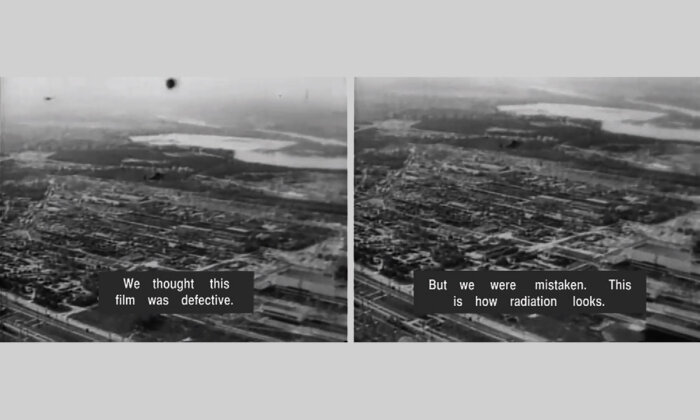The Most Dangerous Film in the World. "We thought this film was defective. But we were mistaken. This is how radiation looks."

Film stills from "Chernobyl: Chronicle of Difficult Weeks," Vladimir Shevchenko, 1986, 54 minutes.
By: Susan Schuppli
Three days after the explosion and meltdown of Chernobyl’s Nuclear Reactor Unit 4 on April 26, 1986, Soviet filmmaker Vladimir Shevchenko was granted permission to fly over the 30-square-kilometer site known as the Exclusion Zone. His assignment was to document the cleanup operations being carried out by Ukrainian workers and volunteers, most of whom would eventually succumb to the extraordinarily high levels of radiation they were exposed to while trying to contain the disaster.
.../...
The detonation of the first nuclear weapon in 1945 altered the planet’s baseline levels of ionizing radiation irrevocably as newly created isotopes such as caesium-134 and 137 began to supplement naturally occurring cosmic and terrestrial radiation. Although caesium-137 first appeared in the early solar system through processes of natural nuclear fission, more than 1.7 billion years would pass before it reappeared on Earth in any detectable amount — on December 2, 1942, as a result of a nuclear chain reaction produced by the first-ever human-made nuclear reactor, the Chicago Pile-1, built under the supervision of physicist Enrico Fermi.
In the decades that immediately followed Fermi’s experiment, “humanity began to significantly change the global radiation environment by testing nuclear weapons in the atmosphere,” as a sobering article charting the fallout from nuclear weapons tests explains. “By the early 1960s, there was no place on Earth where the signature of atmospheric nuclear testing could not be found in soil, water and even polar ice.”
.../...
Today, an estimated 3.5 million Ukrainians are still plagued with maladies linked to Chernobyl; many of them have received little or no compensation for their suffering. The situation in Belarus, recipient of 70 percent of Chernobyl’s airborne contaminants, is even grimmer.

https://thereader.mitpress.mit.edu/the-most-dangerous-film-in-the-world/

Comments